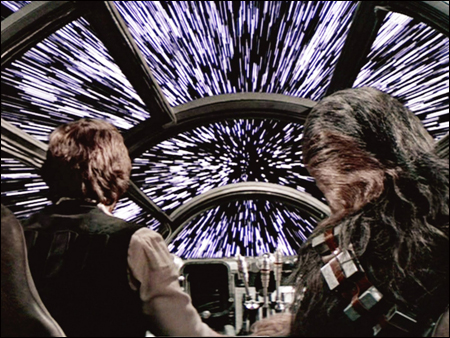If the Millennium Falcon were travelling at 99% of the speed of light and crashed into a planet the size of Earth, how big would the crater be?

1km across, 10km across, 100km across, or would it blow a hole right through the crust and into the mantle?
The first new player to comment on the website with the correct answer wins a free drink at their next iQ Trivia show.
I’d guess around 100 km. Assuming the Falcon is around 25,000 kg, the impact energy would be approximately 1.37×10^22 J at 0.99c. The impact energy of the meteorite that supposedly created the Chicxulub crater in the Gulf of Mexico was calculated to have an impact energy of approximately 10^23 J, which created a crater about 180-300 km wide.
The result of the Falcon’s kamikaze run would be over 65,000 times more powerful than the largest nuclear bomb ever detonated… but it wouldn’t quite destroy the earth, it would just be an extinction-level event.
Naturally a lot of this relies on estimation, but anything that was going to cause a crater on the scale of Chichxulub would have a chance at cracking through to the mantle if it hit in the right spot.
There’s an interesting analysis (using different parameters) here: https://what-if.xkcd.com/20/
And yes, it would kill us all.
It would certainly be more cost effective to just crashing things into a planet at high speed than building a Death Star. (But then you don’t get the satisfaction of LITERALLY blowing a planet to smithereens.)
I’ll always defer to Randall on such things..!
But yes – this is far more effective as a space weapon. Look up “rods from god” for an example of a slower but only slightly less terrifying real world example, where they propose flinging telephone pole sized tungsten rods down from orbit.
That’s quite interesting, and it may have to go on our list of interesing questions.